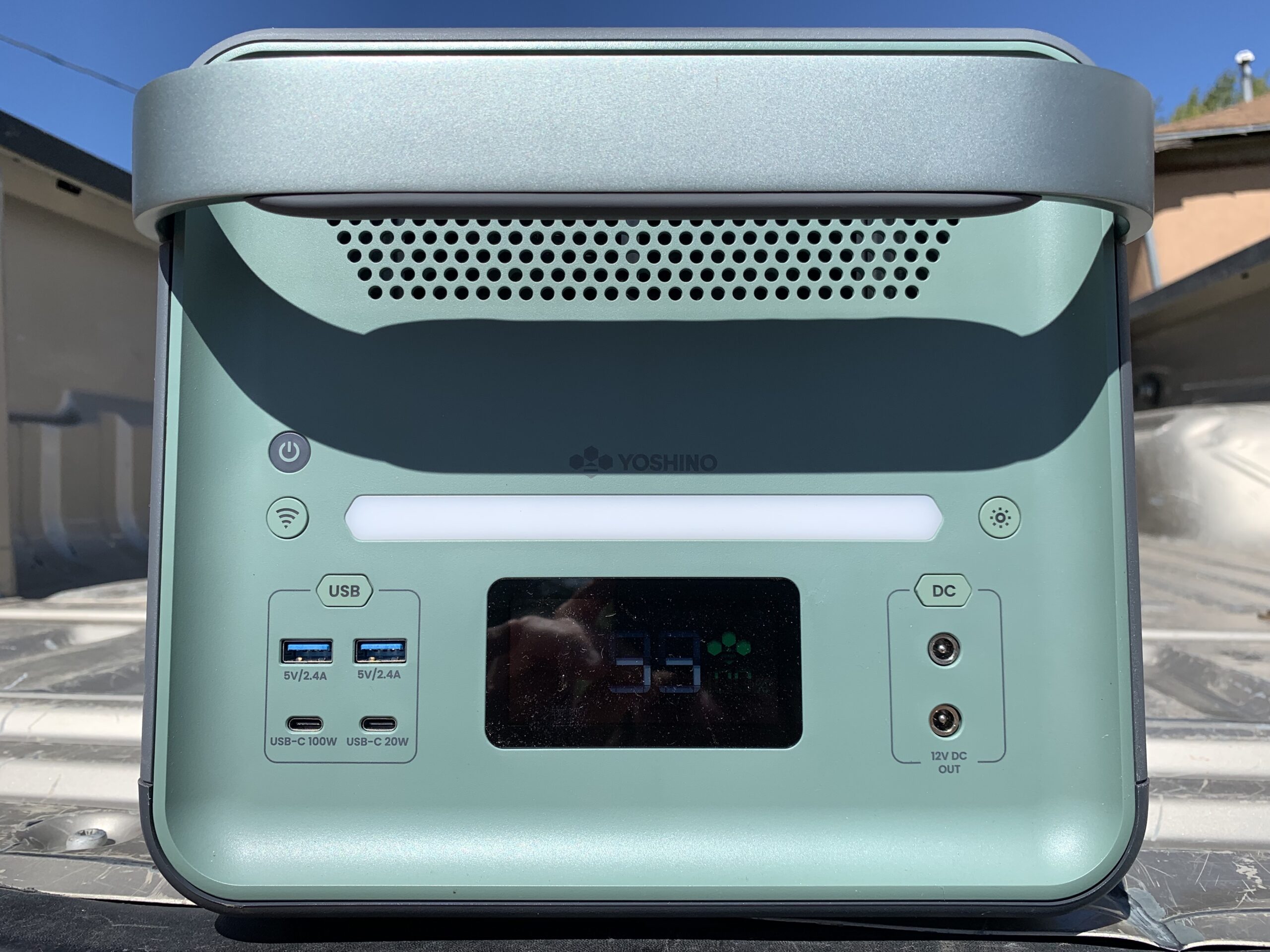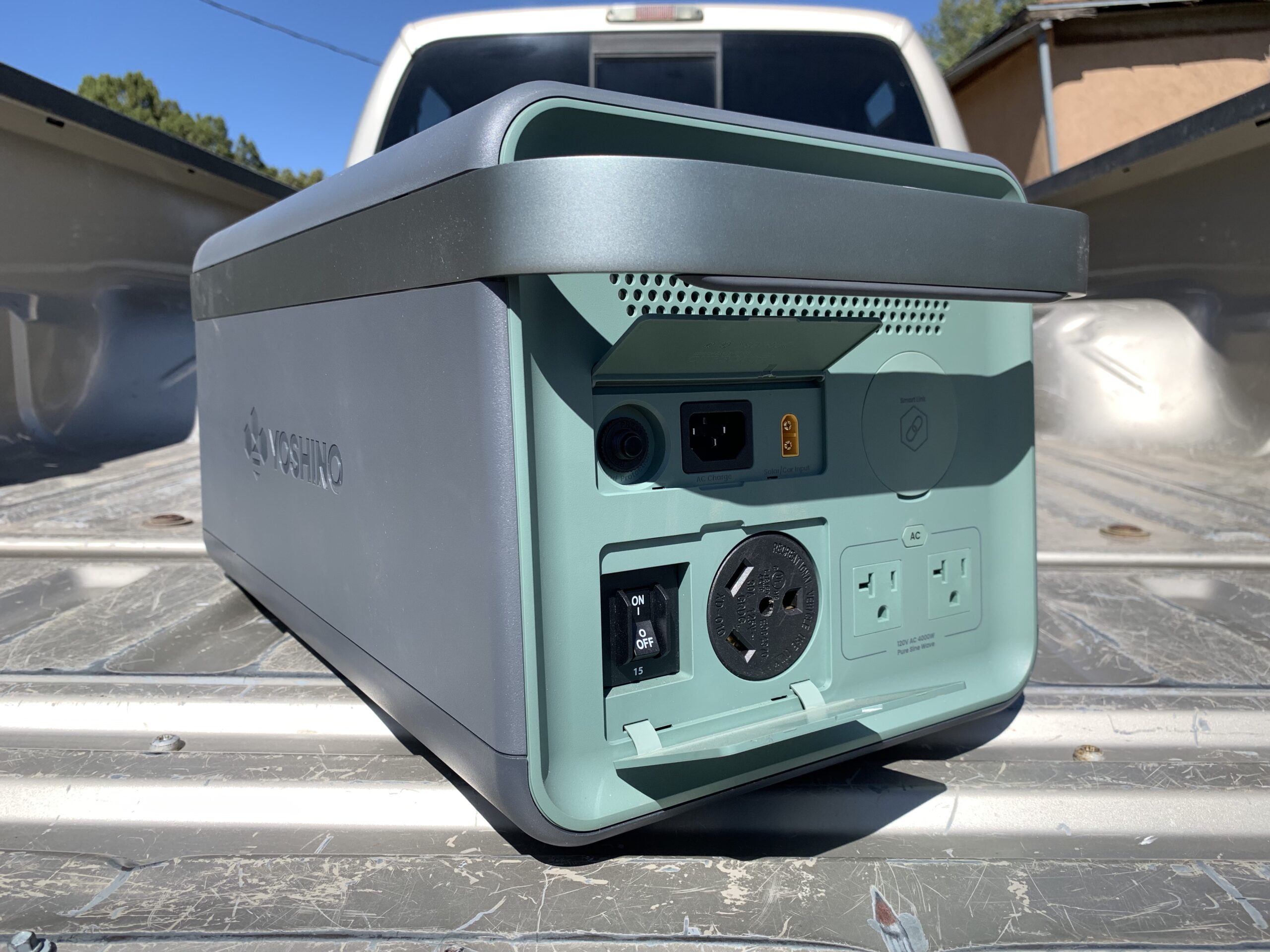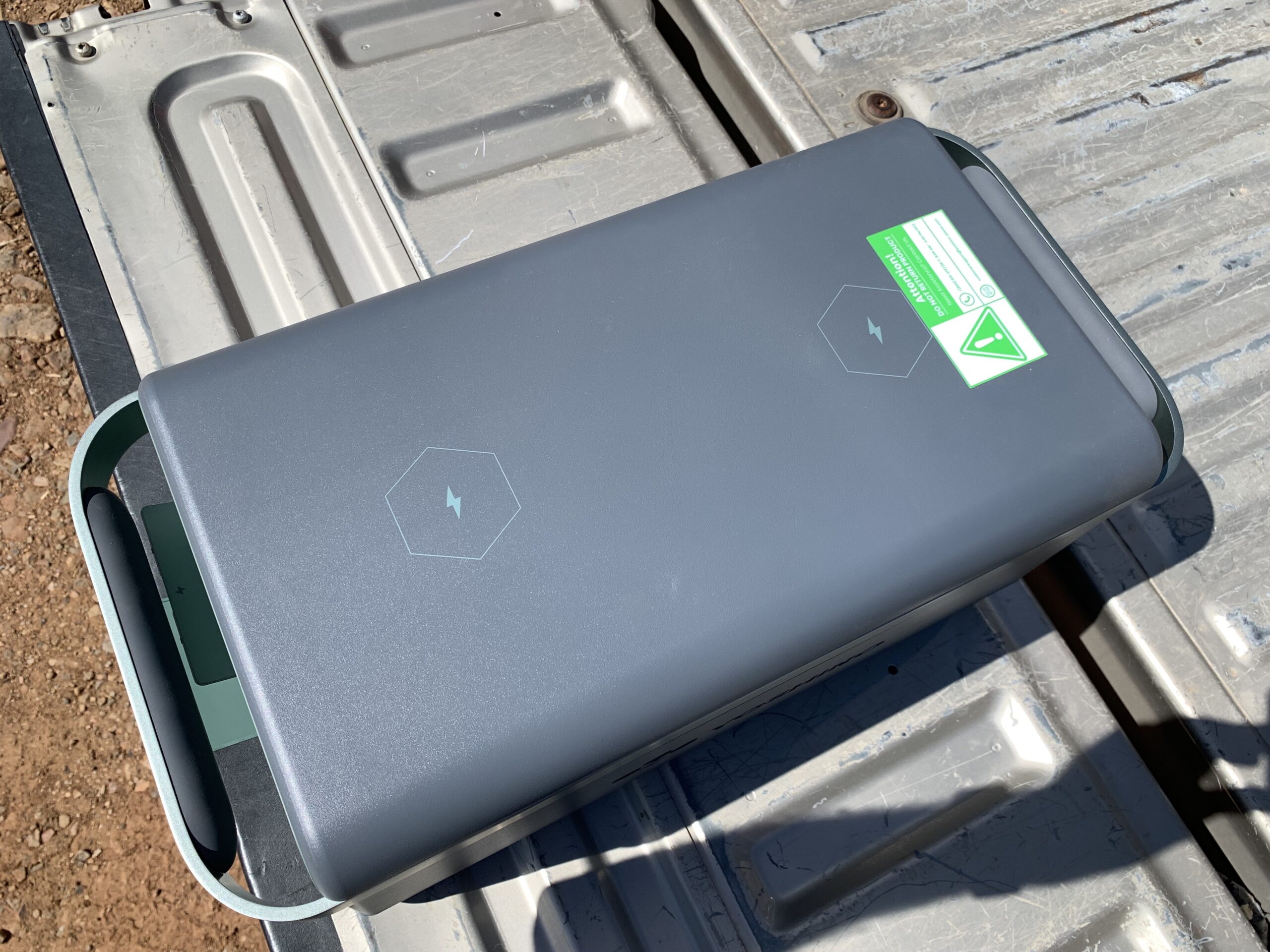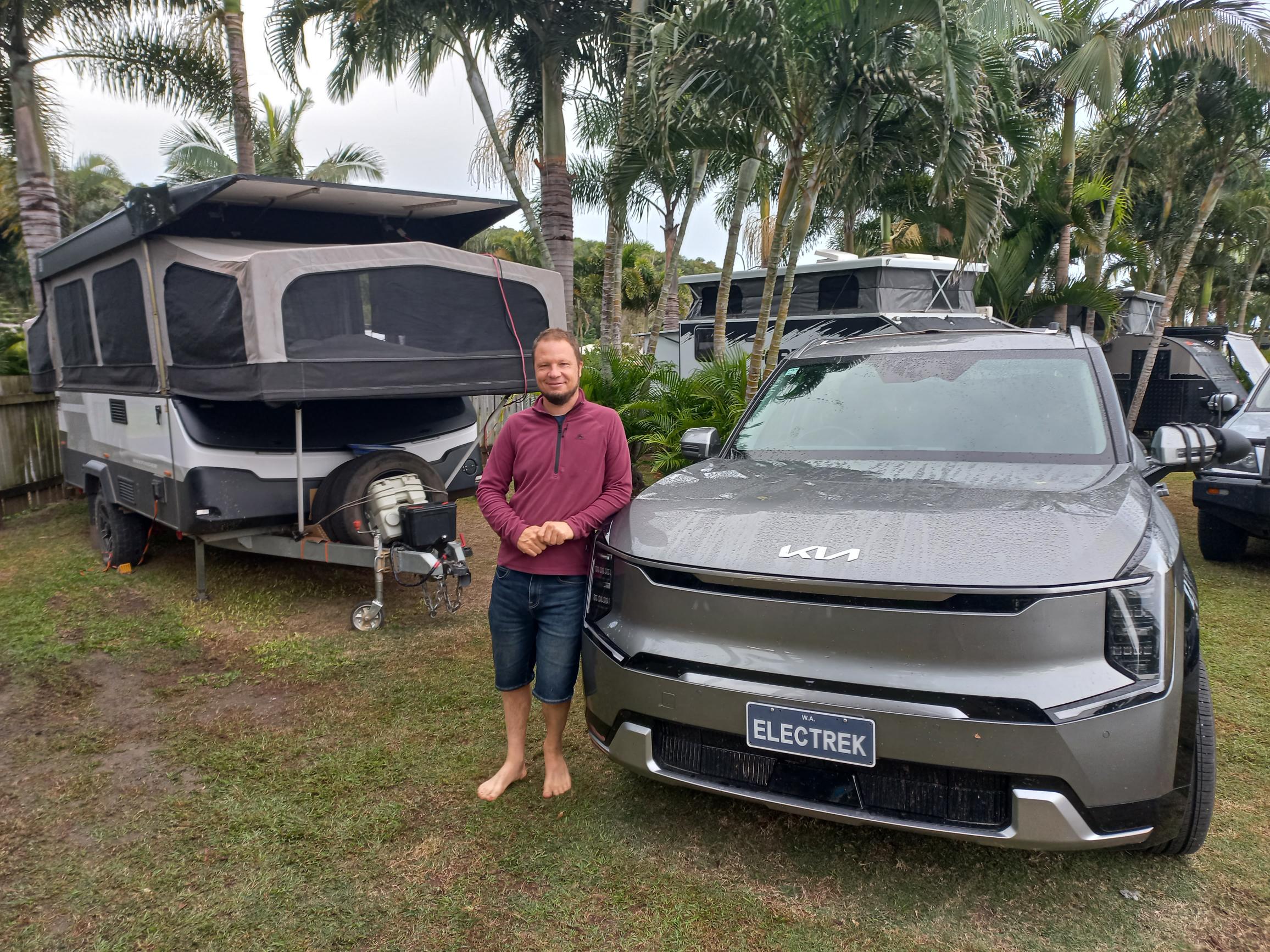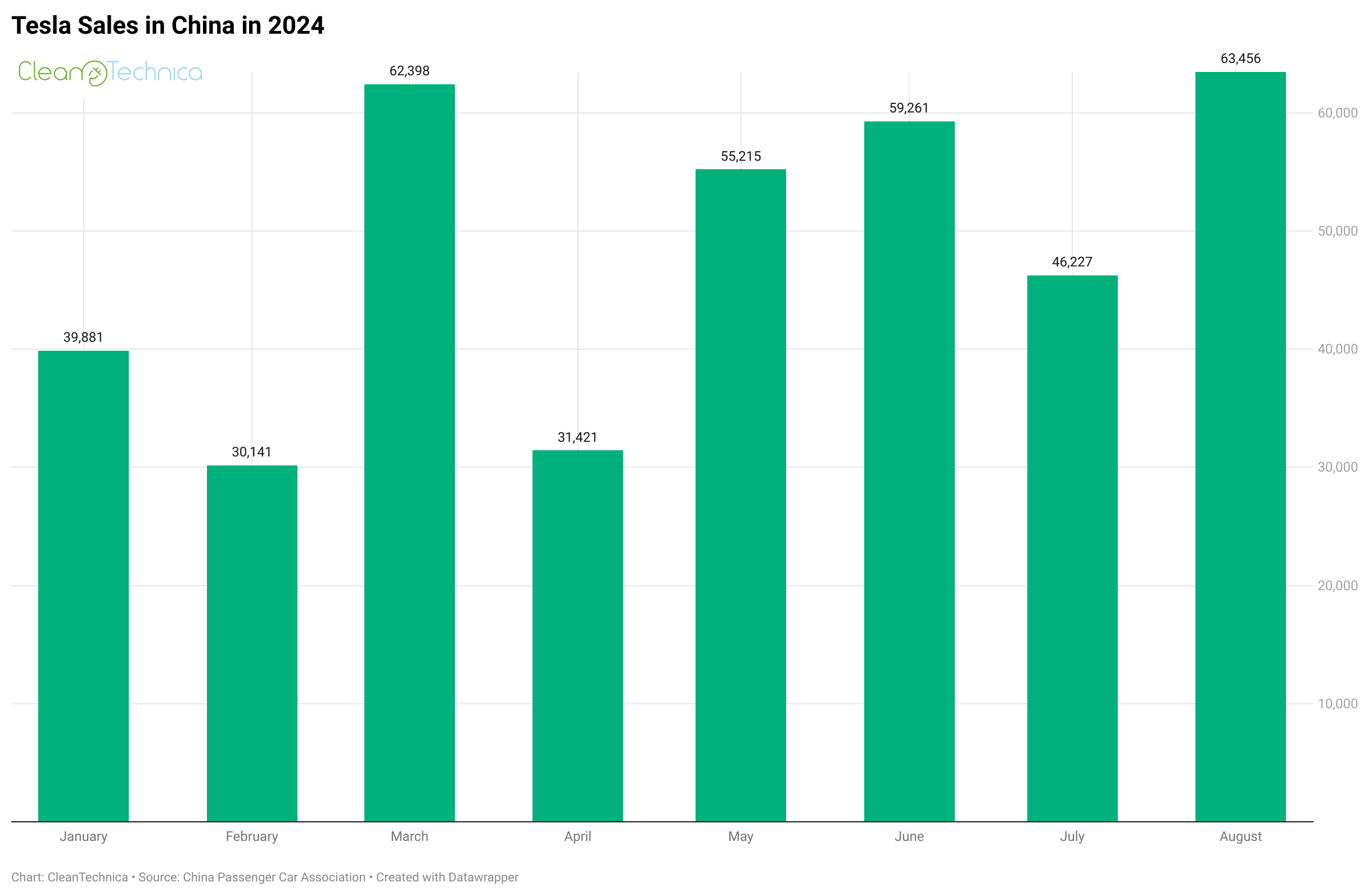Sign up for daily news updates from CleanTechnica on email. Or follow us on Google News!
Yoshino Technology looks to be the first to the consumer market with portable power stations using solid-state lithium battery technology, which promises increased safety and a higher energy density when compared with standard lithium-ion batteries. The company offers these solid-state units in a range of capacities, from the smallest at 330W output and 241Wh of storage to the largest at 4000W output and 2611Wh of storage capacity. I got to spend some time with the largest unit, the B4000 SST, in order to put it through its paces.
It wasn’t very long ago that the portable power station market was mostly focused on small devices that were principally meant to recharge a cellphone or other portable electronics with electricity stored in standard lithium-ion batteries. However, in recent years the trend has been toward larger portable power units (sometimes dubbed “solar generators” when paired with solar panels) that can power all sorts of things, from laptops to power tools to appliances, and that can act as an backup electricity source at home during power outages. I’m a fan of these larger units, which often have capacities of 1 to 3 kWh or more, and can put out 2000 watts continuously, as they make great additions to camping trips and off-grid work projects.
The Yoshino B4000 SST is packed full of features, from wireless charging pads to a TT-30R outlets for RVs to a dedicated outlet for adding expansion battery units for increased storage capacity. A single unit can output up to 4000 watts continuous (up to 6000 watts peak), and offers 2611Wh of electricity storage in its solid-state Li-NCM batteries, so it is a solid contender in the market for portable power stations that can do way more than just recharge small electronics.
We’ve been covering solid-state battery news for some time now, but this is the first portable power station using a solid-state battery that I’ve seen. One of the topics that keeps popping up in the news in recent years is lithium battery fires (which are mostly attributed to low-cost e-bikes and other electric micromobility options), the entrance into the consumer market of a safer option for a portable battery system is likely to be a good selling point.
“One of the key advantages of the Yoshino Solid-State battery was its enhanced safety. Unlike traditional lithium-ion batteries, which are prone to thermal runaway and fires, solid-state batteries offered improved resistance to overheating and reduced fire risk. This safety advantage made them an attractive choice for various applications, including portable power stations that can be used not only outdoors but indoors as well.” – Yoshino
The B4000 SST does weigh in at over 53 pounds, so while it’s definitely still a portable unit, it’s not something you’re going to take on a hike or backpacking trip, although it’s perfect for car camping or RV or #vanlife, and with a handle on each end, it’s a piece of cake for two people to carry. The exterior appears to be rugged enough to stand up to being outside and being hauled around regularly, but it’s not waterproof and is most likely meant to only be used in a protected area during inclement weather.
The front end of the unit features a bright LED task light and an easy-to-read display panel, as well as two 5V/2.4A USB outlets, a 100W USB-C PD outlet, a 20W USB-C outlet, and two 12V DC outlets (DC5521), to which cables such as a car cigarette outlets can be attached. Each of the outlet sections has its own power button, as well as a main power switch for the whole unit. A wi-fi connection feature is also available on the front, which allows for the user to connect the unit to the Yoshino App in order to view and access settings via a smartphone.
On the rear of the unit, there are a pair of standard AC outlets, a TT-30R RV outlet, and the “Smart Link” outlet for connecting the B4000 to one or of Yoshino’s “Smart Expansion Battery” (I could not find any additional info about these expansion batteries on the company’s website). The rear also hosts the AC charging port, as well as an outlet (inlet?) for connecting either a charging cable from a car’s 12V outlet, or for connecting the unit to solar panels. That connection seems to be a proprietary plug shape, and not a standard portable solar panel connection plug, although there may be adapters available somewhere for that.
According to the specs available from Yoshino on the B4000, charging the unit from 0-80% from an AC outlet takes about 70 minutes, which is pretty fast compared to some other portable power stations that I’ve used, or it can be charged using a vehicle’s 12V cigarette lighter port in “approximately 18 hours,” which might be an option for keeping the unit topped off during a road trip. When connected to a 200W solar panel, the unit should be capable of being charged to 80% in about 4.5 hours. As the unit had a partial charge when I received it, and I didn’t manage to drain it entirely before charging, I couldn’t verify the 70-minute charge time, but in my experience with using an AC outlet to charge it from about 50% to full several times, it took about 30 minutes, which is right in line with the stated specs.
The rated capacity of the unit is 2611Wh, which Yoshino states can power a full size refrigerator (160W) for 14 hours, or run a 60W CPAP machine for 37 hours, both of which might really come in handy in the event of a power outage. For smaller portable electronics, such as laptops, tablets, or smartphones, the B4000 can recharge them many times on a single charge, and for power tools, such as an electric chainsaw or angle grinder, it can power them for several hours (the actual runtime will depend on the specs of each power tool).
In my experience, it’s so much easier to just haul a portable power station like the Yoshino B4000 out to an off-grid work site for smaller jobs than it is to load up a gasoline or diesel generator to do the same work. Plus, it’s clean and quiet when compared to running a combustion engine, and unless you need electricity to run power tools all day long (which a gas generator can do, given that you keep feeding it fuel), carrying the B4000 to where you need it is a great alternative to running extremely long extension cords in order to get electricity out beyond the fenceline. And because you really don’t want to run a gas generator inside, having a backup electricity source like this can be incredibly useful in the event of an emergency or power outage.
Another feature that the Yoshino B4000 has is an app, which I did not actually download and use because I’m always skeptical of adding more apps to my phone that do the exact same things that I can do manually. That being said, there are probably use cases where being able to remotely access the unit in order to turn power ports on or off, or being able to see the state of charge without standing right in front of it, may come in handy, but I didn’t have a need for that.
The B4000, like many portable power stations, can also be used as an uninterruptible power supply (UPS), which might be a very useful feature for those who have critical medical devices or electronics that always need to be on, especially in the event of a power failure. The company does caution that the device will switch over within 20 ms, and not 0 ms, which some devices may require. The unit’s wireless charging pads are another handy feature, as it makes it simple to keep phones or other electronic devices charged up without having to keep track of charging cords.
Overall, I was impressed by what the B4000 offered in a relatively small and light footprint, as well as its many output options, from standard AC ports to an RV outlet to multiple USB and 12V DC ports. With solar, vehicle 12V, and AC recharging options, the unit could make a great addition to either emergency preparedness kits or outdoor recreation packing lists — or both.
Yoshino B4000 SST Specs
- 2611Wh capacity (48.36V, 54Ah)
- 4000W AC output (6000W max)
- Solid-state Li-NCM battery
- Cycle life: 2500 charging cycles (to 80% capacity)
- Working temperature (discharging): 14° to 104° F (-10 to 40° C)
- Charging temperature: 32 to 104° F (0 to 40° C)
- Weight: 55.1 pounds (25 kg)
- Dimensions: 21.4″ x 10.2″ x 9.4″ (543 x 260 x 240 mm)
- 5-year warranty
For more information on the Yoshino B4000 SST, which is available for $3,299, see the company website.
Note: Yoshino provided this product to the author for review purposes.
Have a tip for CleanTechnica? Want to advertise? Want to suggest a guest for our CleanTech Talk podcast? Contact us here.
EV Obsession Daily!
I don’t like paywalls. You don’t like paywalls. Who likes paywalls? Here at CleanTechnica, we implemented a limited paywall for a while, but it always felt wrong — and it was always tough to decide what we should put behind there. In theory, your most exclusive and best content goes behind a paywall. But then fewer people read it!! So, we’ve decided to completely nix paywalls here at CleanTechnica. But…
Thank you!
Tesla Sales in 2023, 2024, and 2030
CleanTechnica uses affiliate links. See our policy here.

